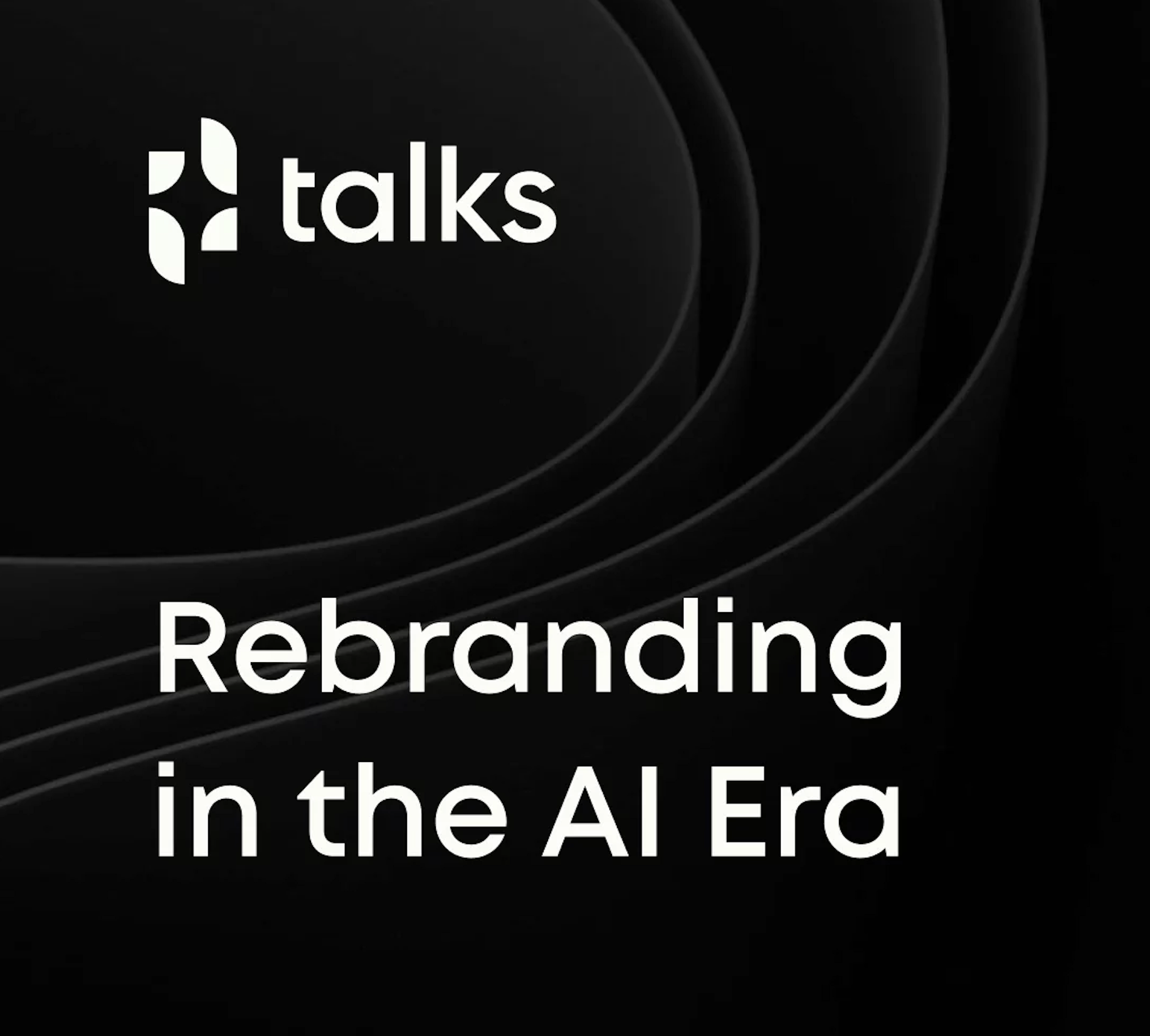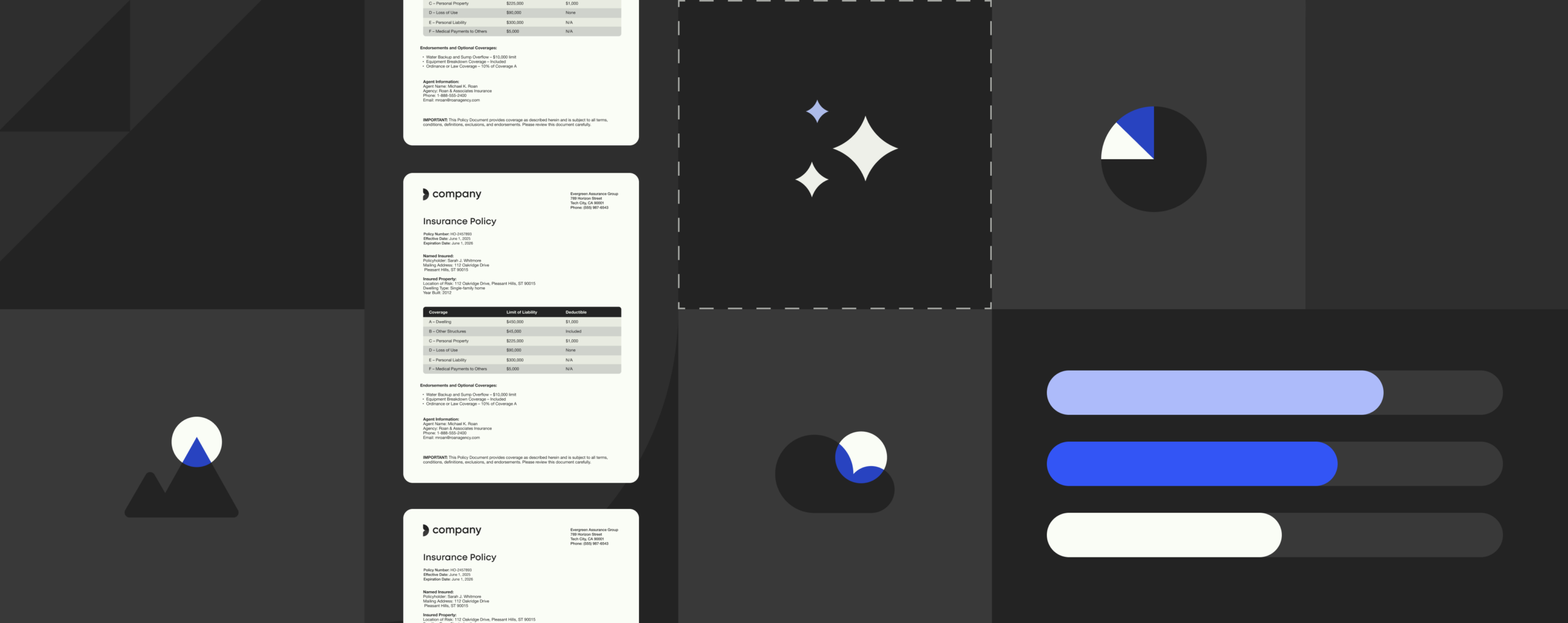Corporate identity design: Why the best brands put guardrails in place

Explore the building blocks, strategy, and governance behind brand consistency that actually sticks.
What makes a brand instantly recognizable? It’s more than a logo or font. It’s the collective impression of how a company looks, sounds, and shows up in the world. That collection is called corporate identity design.
Done well, it helps organizations stand out, build trust, and create a consistent experience across every customer touchpoint.
And the numbers show it matters: 76% of consumers say they prefer to buy from brands they feel connected to, and companies that present their brand consistently have seen 10–20% growth in revenue.
Yet despite its value, many companies still fall short. While most say they have brand guidelines, only one in four actually enforce them. That gap between intention and execution is where identity breaks down—and where the right tools and strategy can make all the difference.
What is corporate identity design?
Corporate identity design is the visual and strategic framework that defines how a company presents itself to the outside world. It includes elements like your logo, color palette, typography, imagery, and tone of voice. Together, these elements form a recognizable and unified appearance that helps people immediately identify your business.
A strong corporate identity design plays a big role in business consistency and recognition. It ensures that every customer touchpoint—whether it’s a website, slide deck, email, or product packaging—looks and feels like it comes from the same source. That consistency builds trust, which is crucial for long-term loyalty and growth.
When your corporate identity is clear and well-executed, you take a competitive stance in the market. Consistency across touchpoints helps your business scale, makes your key messages stick, and gives people a reason to remember you.
How is corporate identity different from corporate design?
The terms corporate identity and corporate design are often used interchangeably, but they’re not the same thing. Understanding the difference is key to building a brand that’s both consistent and memorable.
Corporate identity is the full picture of how a company presents itself to the world. It includes the visual side (design), but also covers messaging, values, behavior, and tone. It answers the question: Who are we as a company, and how do we want to represent ourselves across every touchpoint?
Corporate design is a part of that identity. It’s the visual system used to express it and includes the logo, brand colors, fonts, layout styles, and visual rules for using them.
Think of it like this:
| Corporate identity | Corporate design |
|---|---|
| Big-picture strategy and expression | Visual expression only |
| Includes tone of voice and brand behavior | Includes logo, colors, typography |
| Covers messaging, values, and brand story | Covers visual rules and brand templates |
| Guides all brand experiences | Guides visual brand assets |
A common misconception is that creating a nice logo or design system is enough to define your brand. In reality, corporate design only works when it aligns with a clear and consistent corporate identity. Without that strategic foundation, your visuals may look good, but they won’t communicate anything meaningful.
corporate identity
5 core elements of corporate identity
- Logo design and visual symbols
- Typography and fonts
- Colors and imagery
- Tone of voice and messaging
- Brand style guides
Can’t-miss branding tips
Learn how to keep your brand consistent. Get ideas and examples to help your team create on-brand work with less effort.
1. Logo design and visual symbols
Your logo is usually the first thing people notice, and as a visual shortcut, it’s meant to be memorable. Think of the bold simplicity of Nike’s swoosh or the distinctive smile in the Amazon logo.
Visual symbols can also evolve over time. Mastercard’s recent redesign removed the company name entirely from its logo in most contexts, relying solely on its iconic overlapping red and yellow circles. That level of recognition is the result of decades of consistent use and strategic brand design.
Whether abstract or literal, playful or serious, your logo and visual symbols should tell a story. They should be flexible enough to work across formats, yet distinct enough to stand alone. When done right, they become one of your most valuable brand assets.
2. Typography and fonts
A picture may be worth a thousand words, but when it comes to typography, words can pull double-duty as both direct communication and visual representation.
Type can communicate a brand as warm and friendly, elegant and luxurious, or bold and authoritative before you’ve even read the first word.
Some typefaces are so effective, they become icons in their own right. Helvetica is a classic example. Designed in 1957 by Max Miedinger and Edouard Hoffman, it was built to be clear, neutral, and highly legible. It’s since been adopted by global brands like Jeep and Panasonic and was famously used throughout the New York City Subway system. Its clean lines and no-nonsense style made it a visual shorthand for reliability and modernity.
Typography is also one of the most visible elements of your corporate identity. It shows up everywhere—emails, presentations, contracts, business cards, brochures, internal docs. So the font you choose should be more than just good-looking. It needs to reflect your brand’s personality and work seamlessly across print and digital formats.
IBM’s custom typeface, IBM Plex, is a great example of this in action. Designed to feel both professional and human, it supports the company’s mission to lead in tech while staying grounded in trust and accessibility.
Read more: How to choose the right corporate font
3. Colors and imagery
Color and imagery do a lot of heavy lifting in corporate identity design. They create mood, signal intent, and make your brand instantly recognizable, even without words.
A strong visual identity uses a consistent color palette and image style across all channels, both online and off. When done right, it not only looks good, but helps your creative teams move faster and more confidently. Designers, developers, marketers, and editors can all stay aligned, reducing revisions and keeping output on-brand.
Look at IKEA. Its bright blue and yellow palette is iconic, but it’s the brand’s consistent use of warm, everyday photography that really brings its identity to life. Whether it’s in a product catalog or an Instagram story, IKEA’s imagery feels relatable, intentional, and unmistakably theirs.
Even in B2B, imagery matters. The productivity platform, Notion, uses a monochrome color scheme paired with soft illustrations and clean screenshots. It’s a minimalist look that reflects the product’s flexible, user-first design—and it stands out in a sea of corporate blue.
4. Tone of voice and messaging
Your brand’s tone of voice is how you sound when you communicate. Tone of voice should reflect your company’s personality and values. A legal firm might sound formal, precise, and authoritative. A tech startup could be casual, confident, and curious. The important thing is that your tone is consistent and intentional, no matter who’s doing the writing.
For example, Mailchimp uses a conversational, friendly tone that helps make marketing feel approachable. You’ll find clear, often witty language in their product messages, error alerts, and even loading screens. That’s no accident—it’s built into their brand guidelines and applied everywhere.
On the other hand, a company like Deloitte uses a more formal, thoughtful tone, one that signals expertise and professionalism to its corporate clients. Their messaging is polished and purposeful, designed to build credibility and trust.
Your messaging also needs to adapt to different formats without losing its core voice. A press release won’t sound like a tweet. A customer support email won’t read like a blog post. But across all those formats, the tone should feel like it’s coming from the same brand.
To support this, your brand guidelines should include:
- Core tone descriptors (e.g., “confident, not cocky” or “helpful, not pushy”)
- Sample phrases or taglines
- Writing do’s and don’ts
- Examples for different channels (e.g., social media, sales emails, FAQs)
When your voice is consistent, people start to recognize you. Not just by how you look, but by how you sound. That’s a key part of building a brand people trust and remember.
5. Brand style guides
None of these elements matter if they’re not used consistently. That’s where brand guidelines come in. A good set of rules makes it easy for anyone—designers, marketers, agencies—to keep everything aligned.
Guidelines should outline exactly how and when different visual assets (i.e., images, brand colors, typography, logo designs, templates, web designs, etc.) are used, so you need to consider all placements and provide options for multiple scenarios. It’s always handy to include visual examples of ‘Dos and Don’ts’ to avoid any misinterpretation of the brand style guide.
Remember: consistency builds trust. And trust builds brands.
Read more: How to build a strong brand
Additional content
Considering a rebrand for your organization?
Are you prepared to elevate your brand to new heights? Don’t miss a step in your new brand launch.


The role of governance in corporate identity
Most companies have brand guidelines, but few apply them consistently. That disconnect between what’s written in the brand manual and what actually gets produced is where things fall apart.
When brand elements aren’t used correctly—wrong logo sizes, outdated templates, inconsistent messaging—it weakens your corporate identity and creates confusion. And in a fast-moving, content-heavy workplace, manual policing just isn’t sufficient.
That’s where governance becomes essential. Rather than relying on individuals to apply the rules every time, organizations can use technology to build brand compliance into daily workflows.
Templafy supports this by helping businesses streamline how branded content is created and shared. Through automated document creation, teams can work from templates that reflect the latest brand standards without worrying about version control. With centralized brand content distribution, assets like logos, fonts, and images are always accessible and up to date, right within the tools employees already use. And for teams working with high volumes of content, AI-powered document generation helps keep everything aligned with brand voice and formatting from the very first draft.
Email signatures are another often overlooked piece of the brand consistency puzzle. Every email your team sends is a brand touchpoint, yet many organizations let employees create their own signatures or use outdated templates.
This creates a patchwork of different fonts, colors, logos, and contact information that dilutes your corporate identity. Email signature management solutions like Templafy ensure every outbound message reflects your current brand standards automatically. Teams get professionally designed signatures that stay up to date with the latest brand guidelines, legal disclaimers, and contact details—without having to think about it.
Good governance shouldn’t slow teams down. It gives them a clear, consistent foundation to work from. When corporate identity is built into the process, it’s easier to get content right the first time.
additional content
Establishing brand consistency after global acquisitions
How ERM transitioned acquired brands into their portfolio to boost their overall brand reputation and impact.
Corporate identity design is only as strong as its execution
Plenty of brands have strong corporate identities. And yet they still struggle to build a strong brand reputation. The reality is that most teams aren’t well-equipped to follow and implement brand guidelines consistently.
That’s why execution matters more than intention. Corporate identity design has to go beyond the brand manual and show up in the systems and workflows people actually use: slide templates, emails, documents, shared assets, and everyday communication.
If you want your corporate identity design to make an impact, don’t just define it. Deliver it—Everywhere, every time.
See how Templafy supports a consistent brand identity at scale
Templafy’s brand governance tools make it easy to keep your corporate identity consistent across teams, documents, and channels.
Ready to see how it works? Book a demo today and explore how Templafy can help your brand stay aligned and working for you.



